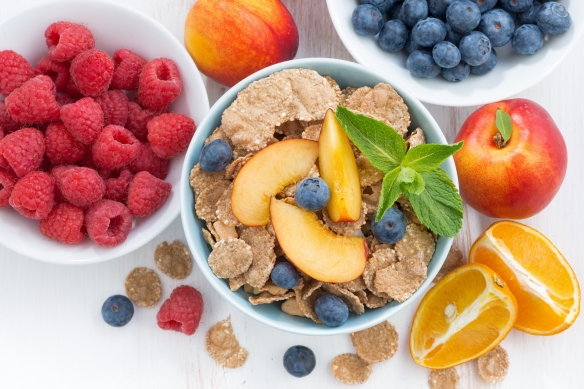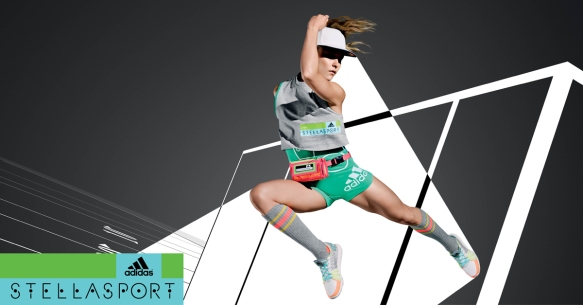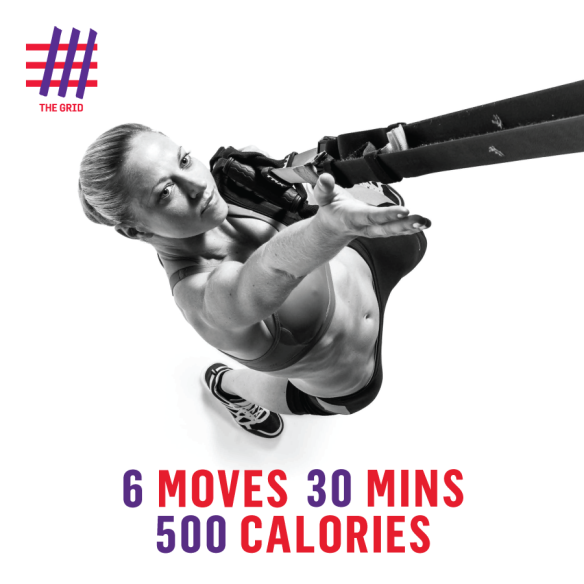
There’s no map for sporting success. No formula, no set of inputs and actions that guarantees a destination of international sporting achievement. That’s why researchers who study these matters throw about terms like “non-linear and dynamic trajectory” and “complex multifactorial pathways”. What they mean is that predicting sporting success is nearly impossible because there are too many forks in the road, too many speed-bumps and too many cul-de-sacs that are poorly signposted.
As a parent, you are part of this journey, first as its driver (literally, if you’re taxiing your kids to practice every day!), then as a navigator. Your actions can go a long way to maximize the probability of success, however you define it.
On that subject, I’d suggest that ‘success’ should be defined as a young adult who continues to play sport and exercise, even if they are not doing it on television or at the Olympic Games. That’s because competitive sport is so elite – you’ve about the same chance of becoming a pro athlete as you do of randomly opening a phone book, closing your eyes and putting your finger on the name of someone who lives in the same street you do. So, perhaps the first important point is that your goal should be to foster a love for sport and exercise that will see your child become a fit, healthy individual, not necessarily a champion.
Critically, that attitude, if you can successfully cultivate it, actually increases the chances of elite sport success too. Conventional wisdom is that to get to the top, you have to sacrifice it all, pick a single sport and then pour all your energy into it from a very young age. Tiger Woods and the Williams sisters are the famous personifications of this mind-set – they specialized, aided and abetted by ambitious parents – and climbed to the summit of their sports.
The problem is, conventional wisdom often isn’t correct, nor wise. We deceive ourselves into thinking that Woods, or the Williams sisters, are the model to copy. The reality is that for every success achieved this way, there are thousands, if not tens of thousands of failures. Because you never see those failures, you’re vulnerable to a classic bias. Conventional wisdom is not only inefficient, it may be harmful – there’s good evidence now that the younger a child starts doing specialist training in one sport, and the more time they devote to sport when very young, the less likely they are to succeed, and perhaps more crucially given our earlier mention of ‘success’, the less likely they are to be active as adults.
So, your role as a parent is pretty clear – whether you want to raise a fit, well-adjusted person who plays sport and exercises, or whether you want to help raise the next AB de Villiers or Pat Lambie, the best thing you can do is to make sure your child starts a journey that doesn’t preordain them to become a statistic.
This is no easy feat, because all the opportunities to play sport at school are part of a system that itself faces the same challenges. Our school sports systems are extremely competitive, and the most competitive schools focus, perhaps understandably given their incentive, on short-term results rather than long-term development. The result is that everything your child encounters challenges his or her long-term success, and that’s the big challenge to overcome because it can prevent them getting access to the resources they need to keep the journey alive.
Take for instance the relative age effect. Children who are born in the first part of the year, January to March, are far more likely to make it into the top sports teams when they are juniors than those born in the final quarter. In rugby, for example, at the Under-20 World Cup, for every player who is born in the fourth quarter (October to December), there are two who are born in the first quarter.
In other words, if success is measured by the ability to make it into national sports teams, you are twice as likely to succeed if you’re ‘lucky’ enough to be born soon after the New Year. Why might this be? The answer is that when we are still children, before adolescence, the difference that ten or eleven months makes to our physical and mental ability is very significant. Two children aged ten will compete against one another in sport because of the way our school calendar works, but if one was born in January, and the other in November or December that same year, they are a year apart in age. All other things being equal, the older child, born in January, has a head start that counts for a lot on a sports field.
Then add to this the differences in the rate of development between children, what scientists often talk of as a mismatch between chronological age (what the calendar tells you) and biological age. Some children are precocious and develop more rapidly and these are the ones who excel when younger, becoming school sports stars on the back of their physical ‘head start’.
You, reading this, are likely to be wearing the ‘parent’ hat. Your challenge is figuring out how to keep your child’s sports or physical activity interests alive through school and into adulthood. Much of this is down to attitude, especially in young children. Are you encouraging participation for learning and enjoyment?
The way around this is to be creative and encouraging of attempts to get resources that will keep those as many children as possible, even those initially overlooked, viable for as long as possible. That is, don’t let the first decision be the final one. Biology and time might well converge at some point in the future when your child is ready to make the A-team and play at a higher level, so you must keep them going long enough to discover if this is the case.
How can you do this? Attitude, as I mentioned, is key. Encourage them to play, because structured training and competitions make up such a small part of a child’s sport participation that a person who keeps playing, even with friends, is keeping the gap as close as possible for as long as possible. There’s no doubt that we over-value structured training, which feeds pre-occupation with selecting teams and playing competitions. You can change that by valuing instead their play and enjoyment, not over-hyped and distorted competitions.
Equally, if you’re the parent of the child who does succeed, who is picked, you have to be careful that you don’t entrench conventional wisdom by over-committing to early success. Realize that a child is much more likely to drop out of a sport than they are to keep going, and you should see the risk of encouraging them to specialize in the way schools sometimes tend to. Play two, three, even four sports if possible. As long as they enjoy it, it’s beneficial, and it keeps their options open.
Also, be flexible to their shifting interests. If they want to explore and sample from a range of different sports, encourage it. A wide range of exposures to sport is the most valuable asset to foster. If it means encouraging them to join a club, go for individualized coaching, or go to the gym to get stronger, then don’t obstruct it. Rather optimize it. Look to invest in their passions and the best way to do this is to figure out ways to surround them with great people. Whatever it takes, try to match passion with people, and you’re making the best possible go at long-term success.
Ultimately, it’s passion you wish to foster. Nothing guarantees success, but what does guarantee failure is when exercise and sport becomes “work”. So, if we return to our definition of success, whether it means wearing green and gold, or simply being an active adult, it will be borne of passion. Or more precisely, success is the inevitable result when passion intersects with opportunity, and most critically, the right people.
Get the right people on board to complete the triangle of passion, opportunity, and most crucially, people.




 Willpower and determination is one thing but skipping meals, consuming too little calories, doubling up on workouts and having ice cubes as a snack is quite another. Weight loss goals should be realistic. And they should be sustainable over the long-term.
Willpower and determination is one thing but skipping meals, consuming too little calories, doubling up on workouts and having ice cubes as a snack is quite another. Weight loss goals should be realistic. And they should be sustainable over the long-term.
 Want to lose weight for real, but don’t know where to start? We’ve rounded up 5 calorie-torching workouts plus some tried-and-tested workout tips to help you shed extra kilograms.
Want to lose weight for real, but don’t know where to start? We’ve rounded up 5 calorie-torching workouts plus some tried-and-tested workout tips to help you shed extra kilograms. Sparks fly as the collective energy of action girls everywhere ignites in the latest adidas StellaSport collection. Inspired by the effortless cool of California summers in the 70s, the collection captures the energetic spirit of the season with a playful and unexpected range of clothing, footwear and accessories.
Sparks fly as the collective energy of action girls everywhere ignites in the latest adidas StellaSport collection. Inspired by the effortless cool of California summers in the 70s, the collection captures the energetic spirit of the season with a playful and unexpected range of clothing, footwear and accessories. Staying healthy through winter always seems like a tough task, but with great new winter offerings, KAUAI can help you stick to healthy habits all the way through to spring. Not only will you get all the good-for-you nutrients, you’ll get great flavour with every bite. To kick start your day, never miss breakfast. Tucking into the Full breakfast gives you free range, protein-rich scrambled eggs to aid muscle development and keep you feeling full. It also includes rosa tomatoes, free range beef sausage and toasted artisan bread making it a well-balanced post workout meal.
Staying healthy through winter always seems like a tough task, but with great new winter offerings, KAUAI can help you stick to healthy habits all the way through to spring. Not only will you get all the good-for-you nutrients, you’ll get great flavour with every bite. To kick start your day, never miss breakfast. Tucking into the Full breakfast gives you free range, protein-rich scrambled eggs to aid muscle development and keep you feeling full. It also includes rosa tomatoes, free range beef sausage and toasted artisan bread making it a well-balanced post workout meal.